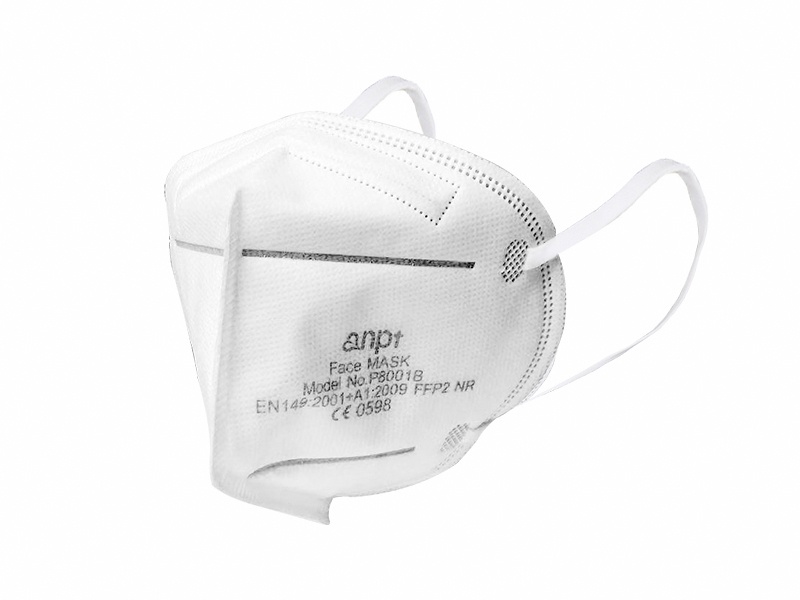Using a
disposable FFP2 mask is a great way to reduce the risk of infection. In fact, wearing two masks can reduce the chance of infection by up to 95%.
Historically, research on masks has focused on improving their efficiency. However, external factors such as temperature, relative humidity, face velocity, and air flow patterns can also have a significant impact on mask filtration performance. Therefore, understanding the mechanisms behind mask filtration may aid in the design and development of more effective masks.
In this study, we investigated the filtration capabilities of non-medical disposable FFP2 masks. The aim is to compare the performance of these masks with the BFE test and the PFE test.
The filtration efficiencies of the four masks were all higher than the BFE values. The difference between the BFE and PFE values of these masks ranged from 1.33 to 4.64%. The differences between the masks are due to differences in the testing conditions.
The average total concentration of particles was 350 particles cm-3. The median diameter is 1.1 um. The GSD is 1.6. The average duration of IET was -29 ± 40 s. The average flow rate was 28.3 L min-1. The normalized distribution of aerosol particles was calculated as the ratio of the number of particles per class to the total number of particles.
PFE testing is faster than bioaerosol testing. This makes them easier to implement. The results of the abiotic PFE correlate with those of the BFE. They can be used as a reference to predict the filtration efficiency of masks.
The filtration capacity of disposable FFP2 masks is significantly higher than that of surgical masks. These masks filter out 94% of particles. Plus, they are single-use and can be sterilized in an oven at 80 degrees Celsius.
Unlike disposable FFP2 dust masks, reusable FFP2 half masks with P2 filters are reusable. They provide protection against 2-5 micron particles. They are available in a variety of forms and accessories. They are also cheaper in the long run. However, more research is needed to confirm their effectiveness.
They are required in public places, shops and public transport in most countries. Several studies have been conducted to determine whether wearing a double layer mask reduces the risk of infection.
These tests show that double masking significantly reduces the risk of infection by up to 95%. It is recommended that users wear double-layer masks as much as possible. This is especially true for jobs involving minor toxic hazards.
While the benefits of double masking are clear, implementation can still be problematic. One of the main problems is the increased effort required to breathe. Another is the impact of speech and hearing impairment. These can lead to decreased job performance.
To assess the influence of these factors, a prospective randomized trial was conducted. Participants were randomly assigned to wear one of three mask types. Each mask is fitted with a filter equivalent to a class 3 particle filtering half mask. Participants then completed a battery of objective and subjective tests.
The results of the trial showed that a majority of participants rated full face masks as more comfortable and safer than half face masks. However, there are also significant differences between the two types. For example, full-face masks scored higher overall and in some categories.
The main outcomes are working conditions, visibility, communication, comfort and safety. These were assessed in tests and online surveys.
Whether you're a medical professional looking for an alternative to your usual face mask, or you just want extra protection, the FFP2 face mask is an easy choice. They are available in a variety of colors and are certified for single use.
While some FFP2 masks are reusable, most are disposable. This is because the demand for them is relatively low. But if you plan to wear a mask in public, a reusable mask may be a better choice.
Masks come in three different grades, from FFP1 to FFP3. The former filters 80% of particulate matter in the air, while the latter filters 99%.
The FFP2 mask is a high-efficiency medical-grade mask. It has a filtration rate of up to 94% and requires several different filtration layers. Each layer is made of different materials and thicknesses.

The FFP2 mask is a multilayer filter mask designed primarily for industrial use. It has a high filtration efficiency, which filters 99.97% of particles larger than 0.5 microns and 99.9% of particles larger than 1.0 microns from the air flows through it. This means that it effectively blocks dust, smoke, fog and microorganisms.
FFP2 masks provide a tighter fit than FFP1 masks. The 4-5 layer design provides effective protection against dust, smoke, fog and microorganisms, while remaining compliant with EN149:2001+A1:2009 level 2 (level 2 PPE) and has been tested to be able to maintain the lower face seal under high negative pressure situations. This mask is disposable, making it easy for you to stay safe when working in potentially dangerous environments.
Description:
• EN149:2001+A1:2009 FFP2 NR
• 4-5 Layer
• Filtration efficiency ≥ 94%
• white
Benefits:
• Effectively block dust, smoke, fog and microorganisms
• Better air tightness, easy to carry with
• Disposable
Dimension:
• Length: 160±5mm
• With: 105±5mm
